
Bodies of Muslims killed during the exodus from Srebrenica discovered by the Hague war crimes tribunal experts are seen in a grave near the eastern Bosnian village of Nova Kasaba, July 1996. The Srebrenica massacre and the years-long Serb siege of Bosnia's capital Sarajevo, were events that turned world opinion against the Serbs and prompted NATO air strikes that helped bring the war to an end. (Photo by Reuters)
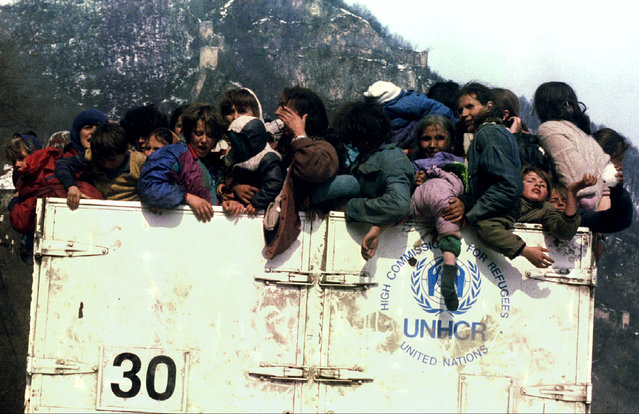
Muslim refugees in an overloaded UNHCR truck during evacuation from besieged Srebrenica, March 1993. On July 11, 1995, towards the end of Bosnia's 1992-95 war, Bosnian Serb forces swept into the eastern Srebrenica enclave, a U.N.-designated “safe heaven”. There they took 8,000 Muslim men and boys and executed them in the days that followed, dumping their bodies into pits in the surrounding forests. (Photo by Reuters)
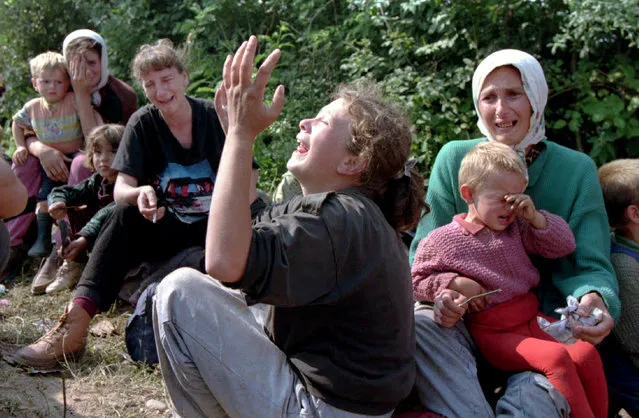
Bosnian refugees from Srebrenica wail over their missing men in the refugee camp at the Tuzla airport, July 1995. (Photo by Reuters)
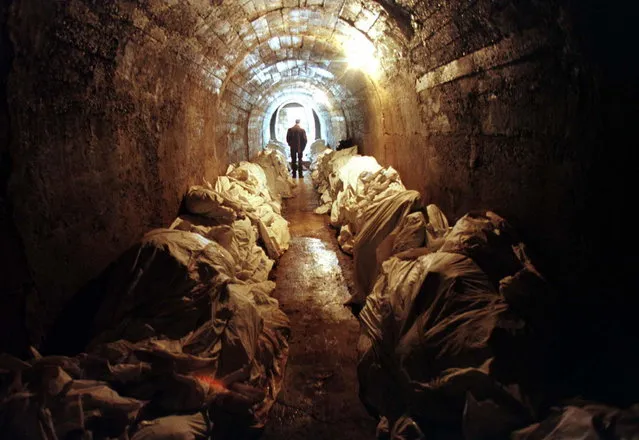
Stacks of unidentified corpses line the walls of an underground shelter at a Bosnian morgue in Tuzla, March 1997. The body bags contain victims found in mass graves and wooded areas in Srebrenica. Former Bosnian Serb leader Radovan Karadzic was found guilty of the 1995 Srebrenica genocide and nine other war crimes charges, U.N. judges said, sentencing him to 40 years in prison. (Photo by Reuters)
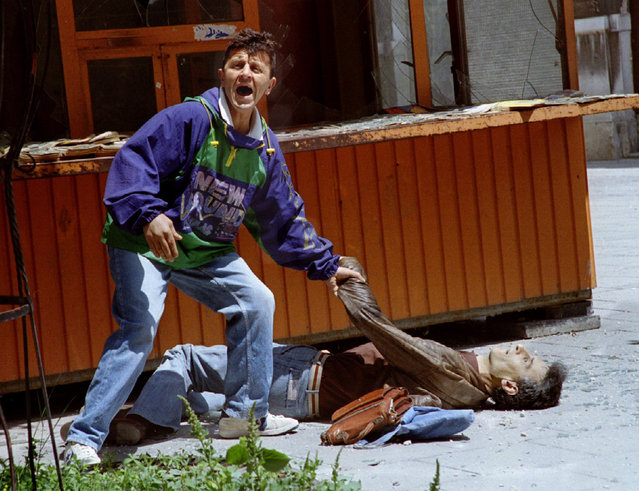
A man yells for help minutes after a Serb shell hit a crowded pedestrian walkway in Sarajevo, May 1993. Radovan Karadzic, a 70-year-old former psychiatrist, still in robust health, is the most senior political figure to be convicted by the International Criminal Tribunal for the Former Yugoslavia. He was found guilty of 10 out of 11 charges. He was acquitted of a second count of genocide in Bosnian towns. (Photo by Reuters)
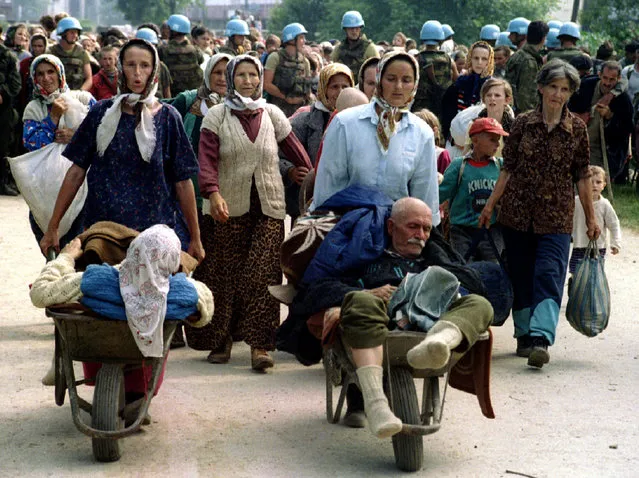
A group of Muslim refugees from Srebrenica walk to be transported from the eastern Bosnian village of Potocari, July 1995. (Photo by Reuters)
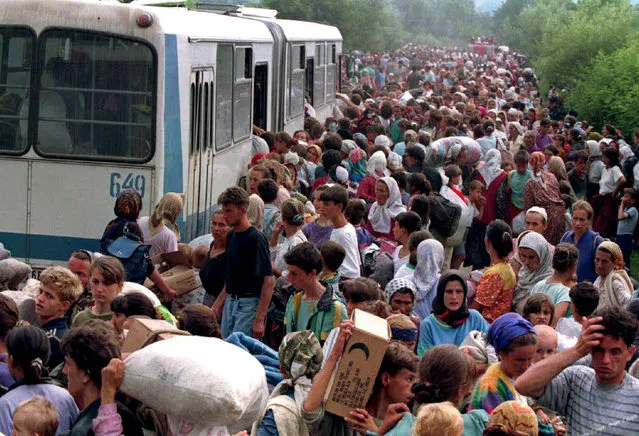
Around 10,000 refugees from Srebrenica are seen boarding buses at a camp outside the U.N. base at Tuzla Airport, July 1995. (Photo by Wade Goddard/Reuters)
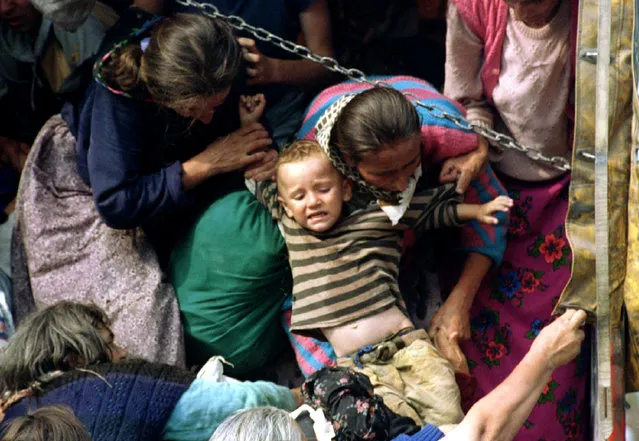
Bosnian Muslim women, refugees from Srebrenica, pull a child onto a truck before being transported from the eastern Bosnian village of Potocari, July 1995. Radovan Karadzic is the highest-ranking person to face a reckoning before the U.N. tribunal in The Hague over a war two decades ago in which 100,000 people were killed as rival armies carved Bosnia up along ethnic lines that largely survive today. (Photo by Reuters)
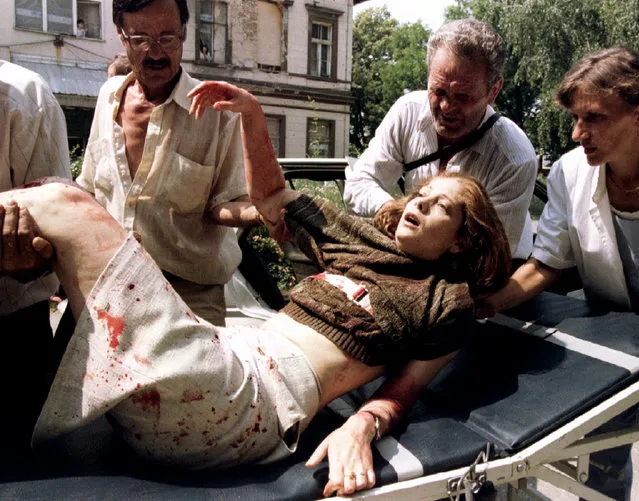
A wounded Bosnian woman is brought to Kosevo hospital in Sarajevo, July 26, 1995. (Photo by Reuters)
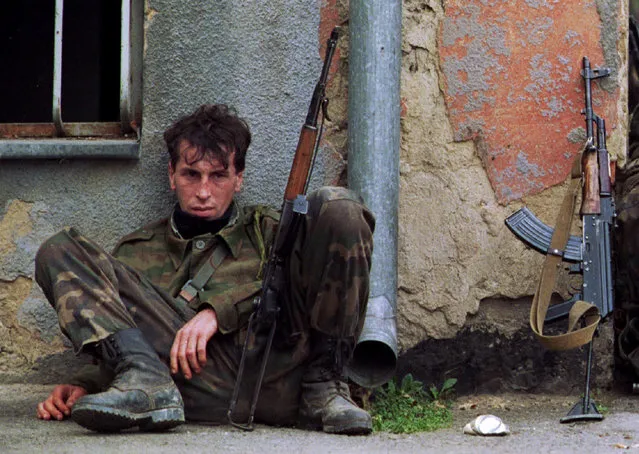
A weary soldier of the Bosnian Army Fifth Corps' elite 502 “Tigers” brigade rests against a wall before heading home after his unit captured a strategic town from separatist Serb forces, securing a road that led into Sarajevo, October 1995. (Photo by Chris Helgren/Reuters)
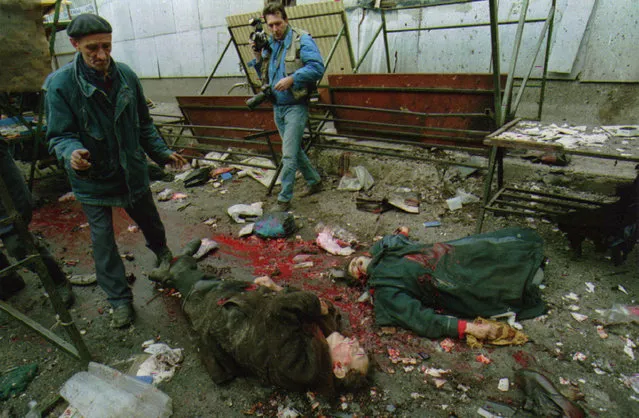
An elderly man and a photographer view two bodies of some 60 people killed by a mortar attack on Sarajevo's central market, February 1994. (Photo by Corinne Dufka/Reuters)
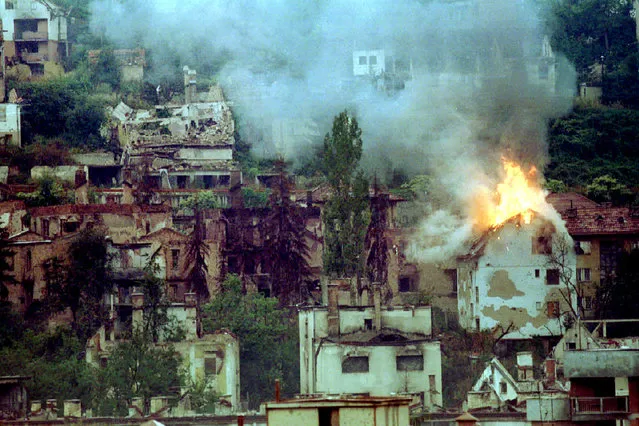
A house is burning down near the Jewish cemetery in Sarajevo, 1994. The house caught fire following a mortar explosion. (Photo by Peter Andrews/Reuters)
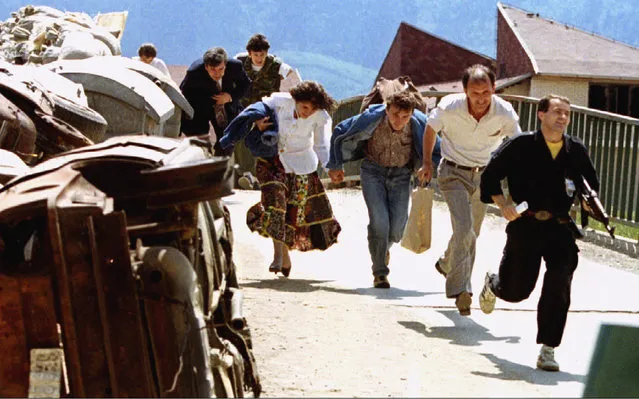
A group of Bosnian civilians, led by a policeman, run a gauntlet of wrecked cars acting as shields from Bosnian Serb snipers in the Sarajevo suburb of Dobrinja, June 1993. (Photo by Chris Helgren/Reuters)
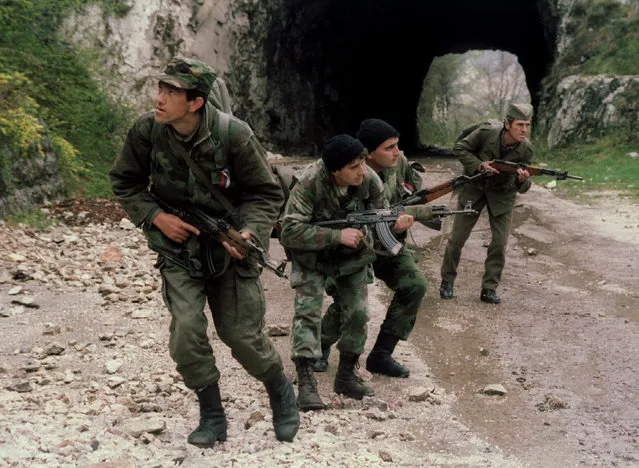
Bosnian Serb soldiers on patrol on a mountain road near the eastern Bosnian town of Gorazde, in a bid to prevent Bosnian Muslim troops from breaking through Serb lines to lift the Sarajevo siege, April 1994. (Photo by Reuters)

Civilians wounded by a mortar bomb in Sarajevo's central market wait for treatment in a hospital corridor, February 5, 1994. The woman at left died while waiting for treatment.. (Photo by Corinne Dufka/Reuters)
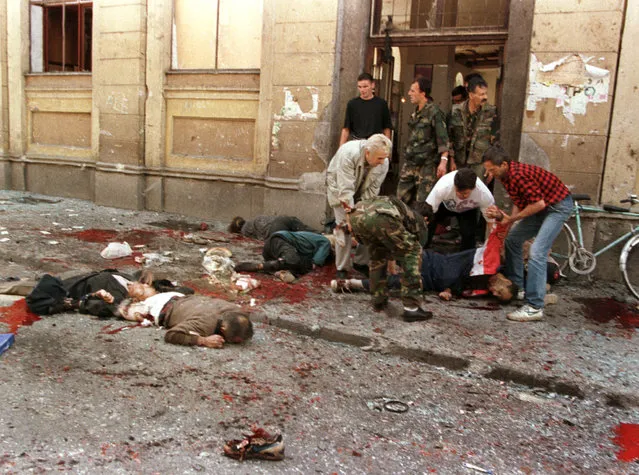
People look for wounded outside of the indoor market at the site of a mortar blast in the center of Sarajevo that killed some 40 people, August 28, 1995. (Photo by Peter Andrews/Reuters)
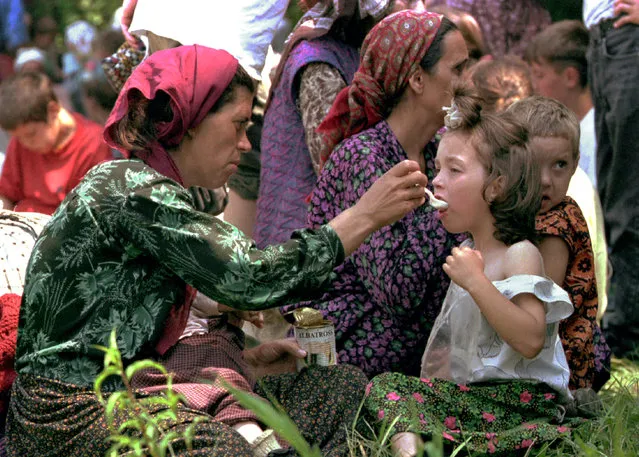
A mother feeds her child at the refugee camp outside the U.N. compound at Tuzla Airport, where thousands of refugees were arriving after fleeing the U.N. safe-haven in Srebrenica after it was overrun by Bosnian Serbs, July 1995. (Photo by Reuters)

Bosnian government soldiers help a refugee from Srebrenica who collapsed from exhaustion upon arrival at the UN compound at Tuzla airport, July 1995. (Photo by Reuters)
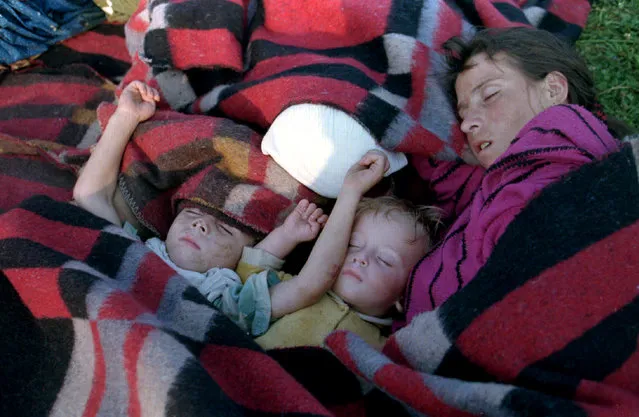
A mother and two children from Srebrenica sleep during the dawn hours on the ground outside the U.N. base at Tuzla airport, July 1995. (Photo by Reuters)
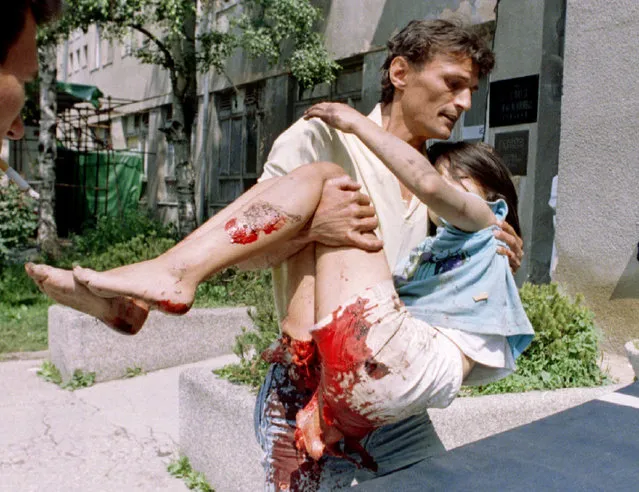
An aid worker carries badly wounded 11-year old girl into the Kosevo hospital in Sarajevo after she was injured by a shell, July 1995. (Photo by Reuters)

A French UN soldier looks in amazement after a huge explosion rocked the center of Sarajevo, June 1995. (Photo by Reuters)
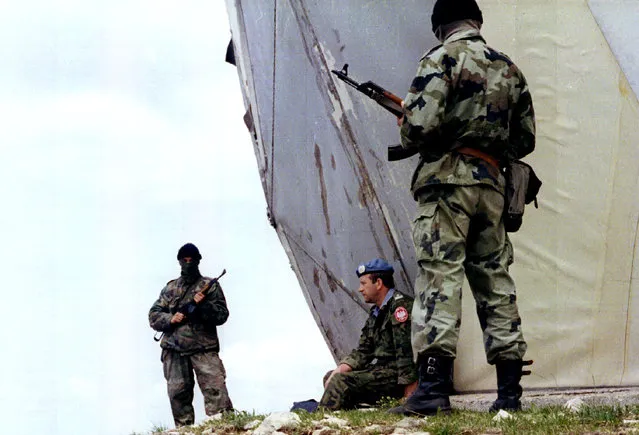
A Polish U.N. peacekeeper taken hostage by Bosnian Serbs in retaliation for NATO air strikes is chained to a radar station and guarded by two masked Bosnian Serb soldiers near Sarajevo, May 1995. (Photo by Reuters)
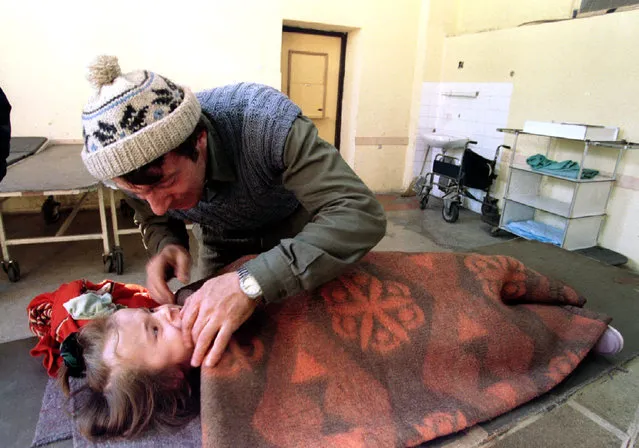
A father comforts his four year-old girl who was wounded by a sniper after she was wheeled into surgery, February 1994. (Photo by Reuters)
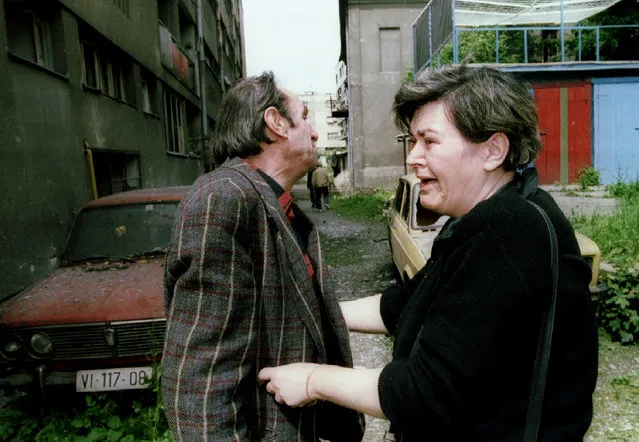
A crying woman comforts the father of a boy who was killed by a mortar in Sarajevo's city center, June 25, 1995. (Photo by Reuters)

Two-year-old Neira Kameric stands beside a mortar scar laid with flowers and a sign that reads “Beware Sniper” in Sarajevo, November 1995. (Photo by Reuters)
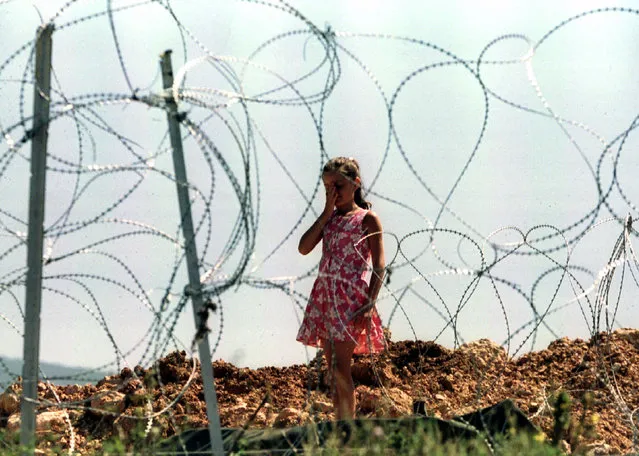
A young girl cries in the cemetery in Sarajevo, August 1994. (Photo by Peter Andrews/Reuters)
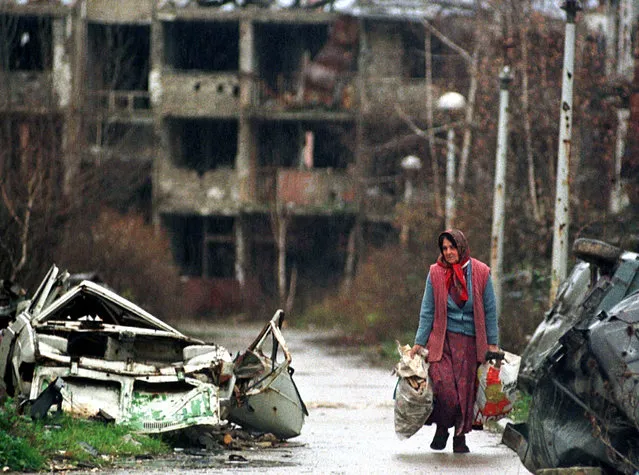
An elderly woman carries her belongings in Sarajevo's war shattered airport settlement, November 1995. (Photo by Reuters)
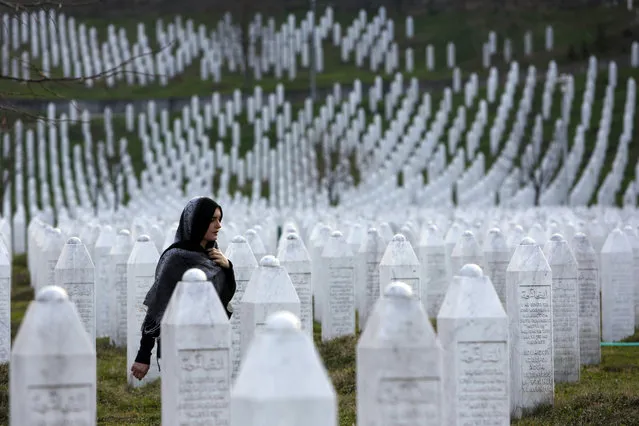
In this photo taken on Sunday, March 20, 2016, a Bosnian woman walks among gravestones at Memorial Centre Potocari near Srebrenica, Bosnia and Herzegovina. Former Bosnian Serb leader Radovan Karadzic will hear his verdict on Thursday, March 24, 2016 and prosecutors of the U.N. war crimes tribunal have called for life in prison for 11 counts of war crimes, including genocide he is accused of having masterminded during Bosnia's 1992-95 war. (Photo by Amel Emric/AP Photo)
25 Mar 2016 13:05:00,
post received
0 comments
